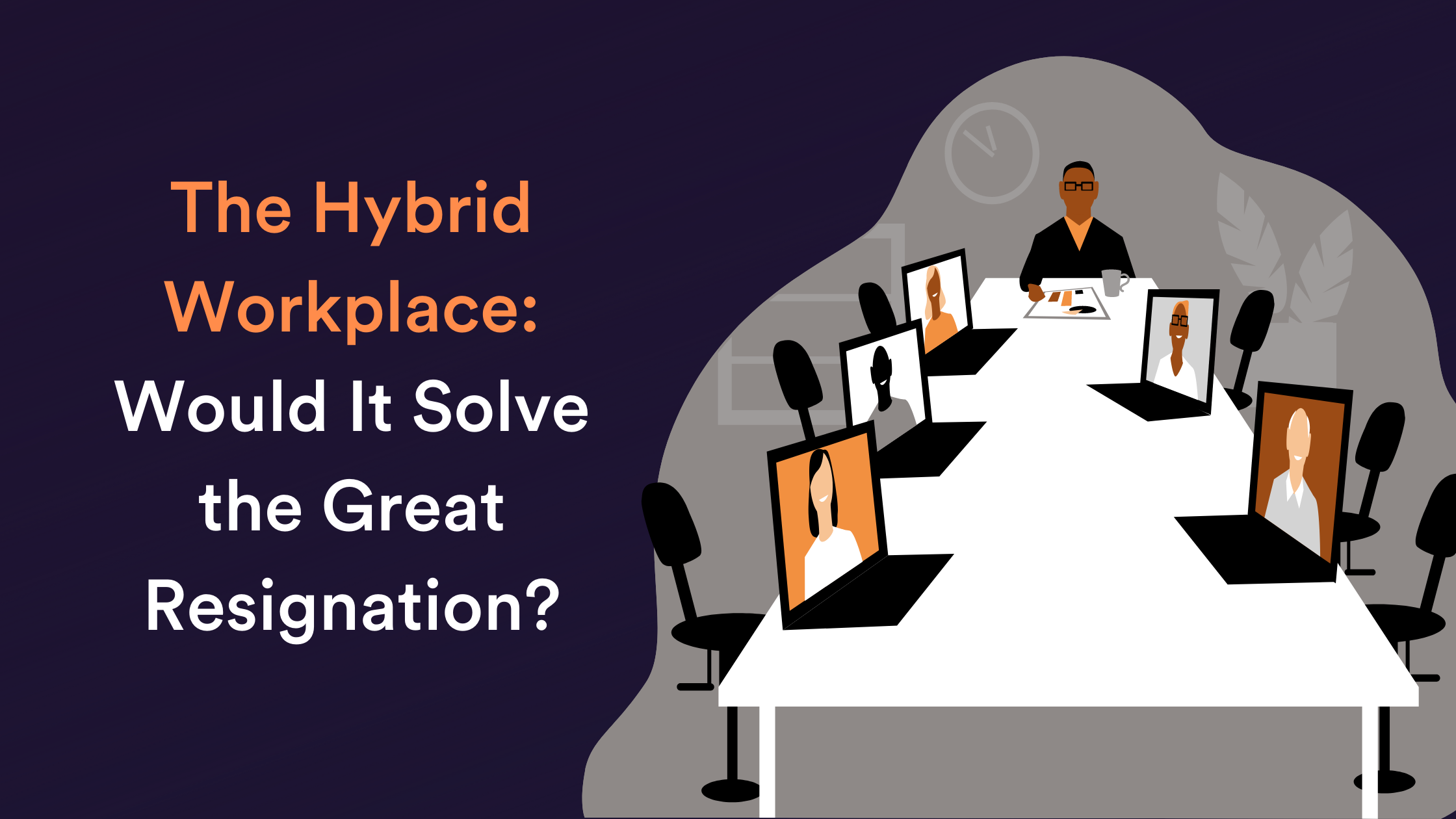Change is happening faster than ever before, and the hybrid workplace has become the so called “new normal”. A large number of workers are now no longer bound by geographical boundaries. They have the opportunity to work for a company from anywhere in the world, with the option to work from the office periodically.
While this new way of working has been praised for allowing employees the flexibility to work from the office or their home, it still hasn’t been enough to prevent The Great Resignation – the mass exodus of employees that have left their jobs in the past year.
The Imperfections of the Hybrid Workplace
So why hasn’t the freedom of the hybrid workplace been enough to satisfy the modern worker? There are a few reasons for this.
- Many hybrid work environments are still structured in a way that requires employees to be chained to their desks, using various invasive technologies to monitor productivity. Whether they’re at home or in the office, they’re unable to take full advantage of the freedom that comes with hybrid work.
- Most hybrid workplaces haven’t implemented the necessary communication tools and team-building activities that foster collaboration between employees in different locations. While individual employees may benefit from flexible schedules and work locations, they suffer as a whole from a lack of meaningful connections and cross-department innovation.
- Many hybrid work environments haven’t created a culture of learning that gives employees the opportunity to grow and learn in ways that further their personal development. With fewer opportunities to learn or express their desire for knowledge, many hybrid workers feel stagnant in their role and are looking for something to inspire them again.
The (Potential) Solution to the Great Resignation
While the hybrid workplace may have imperfections, it is still in its infancy. Companies that are willing to adapt, learn, and experiment with the hybrid workplace model can implement the following innovative strategies to satisfy the modern worker’s needs.
Train Your Employees to Navigate the Hybrid Workplace
When employees are first hired, they develop expectations of their role based on the onboarding process. If they aren’t taught how best to navigate a hybrid workspace, it can be easy to feel isolated at home, unproductive, and uncertain of their role in the company.
It’s therefore essential for companies to provide hybrid work training to their employees. This will ensure that everyone is on the same page and understands the expectations set for them.
Employees might be supplied with digital learning modules that describe the company’s expectations for working from home, how to collaborate with their teams effectively, and what tools they can use to stay connected. There are many different approaches to creating an effective onboarding program.
Create Engaging Onboarding and Upskilling Learning Experiences
In a predominantly remote environment, employees can feel like they’re missing out on the traditional classroom experience. To combat this, companies need to create immersive virtual learning experiences that promote positive collaboration and self-paced upskilling that encourages the employees to have fun as they develop new skills.
Virtual learning doesn’t need to involve mindless slideshows. Instead, businesses should design creative and interactive modules that incorporate live workshops, microlearning, industry expert guests, and fun team exercises.
One way to create a truly transformative learning experience is through gamification. This can involve giving employees challenges to complete, badges to earn, points to rack up, and opportunities to win exciting prizes or perks. This encourages employees to take on new skills and knowledge outside of their comfort zone in a fun and engaging way.
Provide Employees With Opportunities To Collaborate Virtually
For hybrid workplaces to succeed, it’s crucial for employees across the globe to feel connected. Tools and exercises that allow employees in different locations to connect and collaborate are key.
Additionally, companies need to create a culture that encourages employees to connect with other departments as well as their own teammates. By creating more collaborative learning experiences and virtual meetups, employees are encouraged to form meaningful connections with their peers and to work through future challenges as a team.
Empower Employees to Follow Their Own Path
In today’s workplace, employees are more likely to engage with learning experiences that appeal to their interests and preferred learning styles.
Companies can empower hybrid employees by offering learning experiences that are personalized to them. This can be done by identifying employees’ individual learning preferences, personal and professional career goals, and which skills they feel they’re lacking. By identifying these different preferences, managers can better understand how best to motivate their staff while encouraging their skill development.
Create a Culture of Learning with SkildLabs
At SkildLabs, we understand that in order to combat the Great Resignation, businesses need to provide their employees with innovative and transformative learning experiences. Our unique approach to eLearning has enabled us to help companies create custom learning experiences for their employees tailored to their individual needs and interests.
By providing employees with engaging and interactive learning experiences, we believe that they will be more likely to stay with their current company, feel more engaged in their work, and be better equipped to take on future challenges. In this era of hybrid work, it’s more important than ever to invest in your employees by creating a culture of learning that empowers them to pursue their personal and professional goals.
Contact us today to learn how education can be the most powerful tool in attracting and retaining top talent.
